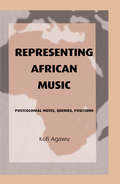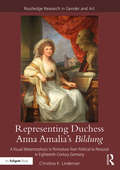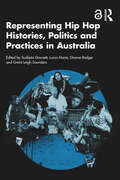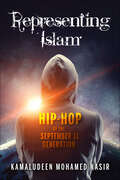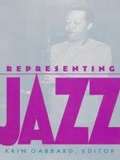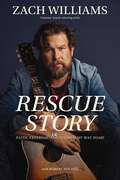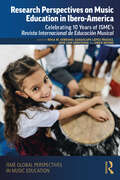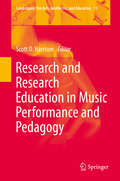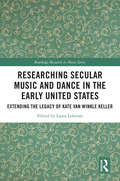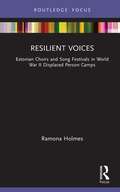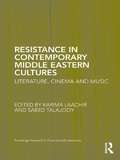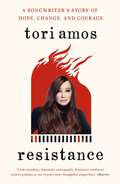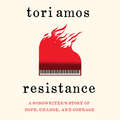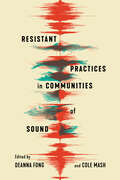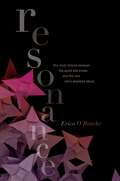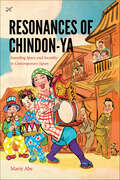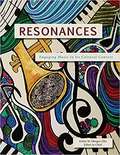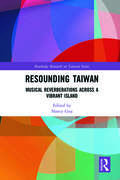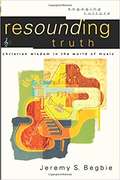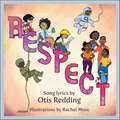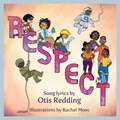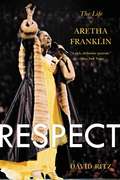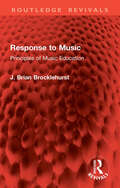- Table View
- List View
Representing African Music: Postcolonial Notes, Queries, Positions
by Kofi AgawuThe aim of this book is to stimulate debate by offering a critique of discourse about African music. Who writes about African music, how, and why? What assumptions and prejudices influence the presentation of ethnographic data? Even the term "African music" suggests there is an agreed-upon meaning, but African music signifies differently to different people. This book also poses the question then, "What is African music?" Agawu offers a new and provocative look at the history of African music scholarship that will resonate with students of ethnomusicology and post-colonial studies. He offers an alternative "Afro-centric" means of understanding African music, and in doing so, illuminates a different mode of creativity beyond the usual provenance of Western criticism. This book will undoubtedly inspire heated debate--and new thinking--among musicologists, cultural theorists, and post-colonial thinkers. Also includes 15 musical examples.
Representing Duchess Anna Amalia's Bildung: A Visual Metamorphosis in Portraiture from Political to Personal in Eighteenth-Century Germany (Routledge Research in Gender and Art)
by Christina K. LindemanThe cultural milieu in the “Age of Goethe” of eighteenth-century Germany is given fresh context in this art historical study of the noted writers’ patroness: Anna Amalia, Duchess of Weimar-Sachsen-Eisenach. An important noblewoman and patron of the arts, Anna Amalia transformed her court into one of the most intellectually and culturally brilliant in Europe; this book reveals the full scope of her impact on the history of art of this time and place. More than just biography or a patronage study, this book closely examines the art produced by German-speaking artists and the figure of Anna Amalia herself. Her portraits demonstrate the importance of social networks that enabled her to construct scholarly, intellectual identities not only for herself, but for the region she represented. By investigating ways in which the duchess navigated within male-dominated institutions as a means of advancing her own self-cultivation – or Bildung – this book demonstrates the role accorded to women in the public sphere, cultural politics, and historical memory. Cumulatively, Christina K. Lindeman traces how Anna Amalia, a woman from a small German principality, was represented as an active participant in enlightened discourses. The author presents a novel and original argument concerned with how a powerful woman used art to shape her identity, how that identity changed over time, and how people around her shaped it – an approach that elucidates the power of portraiture in eighteenth- and early nineteenth-century Europe.
Representing Hip Hop Histories, Politics and Practices in Australia
by Dianne Rodger Sudiipta Dowsett Lucas Marie Grant Leigh SaundersThis long-awaited volume is the first edited collection to focus entirely on Hip Hop in Australia. Bringing together both scholarly and practitioner perspectives, across 11 chapters, contributors explore the diversity of identities, communities, practices, and expressions that make-up Hip Hop in Australia, including Emceeing/ music production, Graffiti and Breaking.The theoretical and methodological frameworks used include ethnographic and autoethnographic research and writing, discourse analysis, Indigenous methodologies, textual analysis and archival research. Some authors present their contributions in academic chapters, while others use creative formats. The book showcases how Hip Hop is understood and lived across numerous settings in Australia, making important contributions to global Hip Hop studies and scholarship in related fields such as popular music, youth culture and First Nations Studies.It will prove essential reading for students, academics, and practitioners interested in Hip Hop, social justice, popular culture, music and dance in Australia.
Representing Islam: Hip-Hop of the September 11 Generation (Framing the Global)
by Kamaludeen Mohamed NasirHow do Muslims who grew up after September 11 balance their love for hip-hop with their devotion to Islam? How do they live the piety and modesty called for by their faith while celebrating an art form defined, in part, by overt sexuality, violence, and profanity? In Representing Islam, Kamaludeen Mohamed Nasir explores the tension between Islam and the global popularity of hip-hop, including attempts by the hip-hop ummah, or community, to draw from the struggles of African Americans in order to articulate the human rights abuses Muslims face. Nasir explores state management of hip-hop culture and how Muslim hip-hoppers are attempting to "Islamize" the genre's performance and jargon to bring the music more in line with religious requirements, which are perhaps even more fraught for female artists who struggle with who has the right to speak for Muslim women. Nasir also investigates the vibrant underground hip-hop culture that exists online. For fans living in conservative countries, social media offers an opportunity to explore and discuss hip-hop when more traditional avenues have been closed. Representing Islam considers the complex and multifaceted rise of hip-hop on a global stage and, in doing so, asks broader questions about how Islam is represented in this global community.
Representing Jazz
by Krin GabbardTraditional jazz studies have tended to see jazz in purely musical terms, as a series of changes in rhythm, tonality, and harmony, or as a parade of great players. But jazz has also entered the cultural mix through its significant impact on novelists, filmmakers, dancers, painters, biographers, and photographers. Representing Jazz explores the "other" history of jazz created by these artists, a history that tells us as much about the meaning of the music as do the many books that narrate the lives of musicians or describe their recordings.Krin Gabbard has gathered essays by distinguished writers from a variety of fields. They provide engaging analyses of films such as Round Midnight, Bird, Mo' Better Blues, Cabin in the Sky, and Jammin' the Blues; the writings of Eudora Welty and Dorothy Baker; the careers of the great lindy hoppers of the 1930s and 1940s; Mura Dehn's extraordinary documentary on jazz dance; the jazz photography of William Claxton; painters of the New York School; the traditions of jazz autobiography; and the art of "vocalese." The contributors to this volume assess the influence of extramusical sources on our knowledge of jazz and suggest that the living contexts of the music must be considered if a more sophisticated jazz scholarship is ever to evolve. Transcending the familiar patterns of jazz history and criticism, Representing Jazz looks at how the music actually has been heard and felt at different levels of American culture.With its companion anthology, Jazz Among the Discourses, this volume will enrich and transform the literature of jazz studies. Its provocative essays will interest both aficionados and potential jazz fans.Contributors. Karen Backstein, Leland H. Chambers, Robert P. Crease, Krin Gabbard, Frederick Garber, Barry K. Grant, Mona Hadler, Christopher Harlos, Michael Jarrett, Adam Knee, Arthur Knight, James Naremore
Rescue Story: Faith, Freedom, and Finding My Way Home
by Zach WilliamsFrom a hard-rocking life fueled by substance abuse to a hope-filled life of freedom and joy--this is music star Zach Williams's bold and vulnerable story of faith and redemption.Before two-time GRAMMY Award winner Zach Williams penned heartfelt, faith-filled ballads like "Chain Breaker," "There Was Jesus (featuring Dolly Parton)," and "Fear Is a Liar," there was darkness. A rock-and-roll singer who thought he had all he ever wanted to make him happy, Zach instead felt empty. The drugs, alcohol, and late-night gigs played around the world couldn't satisfy the longing in his heart for a place to belong. He was desperate for change.It came while on tour in Spain with his band, and in this powerful and poignant memoir, Zach shares in vivid detail his personal Rescue Story. He reflects on his childhood and the prophecy that kept his parents from giving up hope, his descent into the substance abuse that held him captive for so long, and ultimately the rescue he didn't think was possible but embraced with open arms.A compelling, honest story of God's unconditional love, grace, and redemption, Rescue Story shares the intimate journey of a beloved music artist and challenges you to seek resilient hope in the trials of your own life--because Jesus offers real freedom and joy, despite the mistakes of your past.
Research Perspectives on Music Education in Ibero-America: Celebrating 10 Years of ISME’s Revista Internacional de Educación Musical (ISME Series in Music Education)
by Gwen Moore Guadalupe López-Íñiguez José Luis Aróstegui Rosa M. SerranoThis volume brings together a selection of essential articles from the journal Revista Internacional de Educación Musical (RIEM), a Spanish-language journal published by the International Society for Music Education, making this work available to an English-speaking audience for the first time. With chapters representing a wide range of countries in the Ibero-American world, including Argentina, Brazil, Chile, Colombia, Mexico, Portugal, and Spain, the book aims to develop international exchange in the music education community. The book is structured around key themes, including music teacher training, youth music education, higher music education, and sociomusical programs, with a focus on opportunities for improvement across music education contexts inside and outside schools. Making vibrant research and practice from across the region available to a wider international audience, this book facilitates exchanges between researchers and educators and enhances global music education studies by highlighting groundbreaking work from Spanish- and Portuguese-speaking countries.
Research and Research Education in Music Performance and Pedagogy
by Scott D. HarrisonThis volume is an innovative collection that transcends national boundaries and provides new knowledge about approaches to research and research education in music. The collection brings together leading thinkers and practitioners in music research from Europe, Asia, North America and Australia. The book is designed to serve as a resource for university music departments and conservatoires, and offers insights into the development of research programs in this context.
Research-Creation in Music and the Arts: Towards a Collaborative Interdiscipline (SEMPRE Studies in The Psychology of Music)
by Serge Lacasse Sophie StévanceSince the 1970s, the landscape of higher education and research has been considerably altered by the integration of the arts within the university environment. Even though a form of research is inherent to artistic creation, the creative process is not comparable to the established procedures involved in academic research. As such, how can the imperatives of intellectual (and sometimes restrictive) rigour characteristic of scholarly endeavours be reconciled with the more explorative and intuitive approach of artistic creation? The concept of 'research-creation' allows artists and scholars to collaborate on a common project, acknowledging each participant’s expertise in the production of an artistic work that either generates theoretical reflections or has emerged from academic research. This fully revised and updated translation of Sophie Stévance and Serge Lacasse’s original French book offers an overview of the historical, political, social, cultural and academic contexts within which research-creation has emerged in Quebec and Canada, before similar (yet often divergent) conceptions appeared elsewhere in the world. Focussing primarily on the case of music, the book goes on to explore the pedagogical potential of research-creation within a university-based environment and proposes a clear and encompassing definition, as well as a theoretical model, of research-creation supported by concrete examples. By underscoring the reciprocal nature of this approach and the potential benefits of collaborative relationships, the authors’ vision of research-creation extends far beyond the field of music and art alone: rather, it has the potential to integrate all approaches and disciplines that seek to combine practice and research.
Researching Live Music: Gigs, Tours, Concerts and Festivals
by Chris AndertonResearching Live Music offers an important contribution to the emergent field of live music studies. Featuring paradigmatic case studies, this book is split into four parts, first addressing perspectives associated with production, then promotion and consumption, and finally policy. The contributors to the book draw on a range of methodological and theoretical positions to provide a critical resource that casts new light on live music processes and shows how live music events have become central to raising and discussing broader social and cultural issues. Their case studies expand our knowledge of how live music events work and extend beyond the familiar contexts of the United States and United Kingdom to include examples drawn from Argentina, Australia, France, Jamaica, Japan, New Zealand, Switzerland, and Poland. Researching Live Music is the first comprehensive review of the different ways in which live music can be studied as an interdisciplinary field, including innovative approaches to the study of historic and contemporary live music events. It represents a crucial reading for professionals, students, and researchers working in all aspects of live music.
Researching Secular Music and Dance in the Early United States: Extending the Legacy of Kate Van Winkle Keller (Routledge Research in Music)
by Laura LohmanThis book provides a practical introduction to researching and performing early Anglo-American secular music and dance with attention to their place in society. Supporting growing interest among scholars and performers spanning numerous disciplines, this book contributes quality new scholarship to spur further research on this overshadowed period of American music and dance. Organized in three parts, the chapters offer methodological and interpretative guidance and model varied approaches to contemporary scholarship. The first part introduces important bibliographic tools and models their use in focused examinations of individual objects of material musical culture. The second part illustrates methods of situating dance and its music in early American society as relevant to scholars working in multiple disciplines. The third part examines contemporary performance of early American music and dance from three distinct perspectives ranging from ethnomusicological fieldwork and phenomenology to the theatrical stage. Dedicated to scholar Kate Van Winkle Keller, this volume builds on her legacy of foundational contributions to the study of early American secular music, dance, and society. It provides an essential resource for all those researching and performing music and dance from the revolutionary era through the early nineteenth century.
Resilient Voices: Estonian Choirs and Song Festivals in World War II Displaced Person Camps
by Ramona HolmesThe aftermath of World War II sent thousands of Estonian refugees into Europe. The years of Estonian independence (1917-1940) had given them a taste of freedom and so relocation to displaced person (DP) camps in post-war Germany was extremely painful. One way in which Estonians dealt with the chaos and trauma of WWII and its aftermath was through choral singing. Just as song festivals helped establish national identity in 1869, song festivals promoted cultural cohesiveness for Estonians in WWII displaced person camps. A key turning point in hope for the Estonian DPs was the 1947 Augsburg Song Festival, which is the center point of this book. As Estonian DPs dispersed to Australia, Canada, Europe, and the United States these choirs and song festivals gave Estonians the resilience to retain their identity and to thrive in their new homes. This history of Estonian WWII DP camp choirs and song festivals is gathered from the stories of many courageous individuals and filled with the tenacious spirit of the Estonian singing culture. This work contributes to an understanding of immigration, identity, and resilience and is particularly important within the field of music regarding music and healing, music and identity, historical musicology, ethnomusicology, and music and politics.
Resistance in Contemporary Middle Eastern Cultures: Literature, Cinema and Music (Routledge Research in Postcolonial Literatures)
by Karima Laachir Saeed TalajooyThis study highlights the connections between power, cultural products, resistance, and the artistic strategies through which that resistance is voiced in the Middle East. Exploring cultural displays of dissent in the form of literary works, films, and music, the collection uses the concept of 'cultural resistance' to describe the way culture and cultural creations are used to resist or even change the dominant political, social, economic, and cultural discourses and structures either consciously or unconsciously. The contributors do not claim that these cultural products constitute organized resistance movements, but rather that they reflect instances of defiance that stem from their peculiar contexts. If culture can be used to consolidate and perpetuate power relations in societies, it can also be used as the site of resistance to oppression in its various forms: gender, class, ethnicity, and sexuality, subverting existing dominant social and political hegemonies in the Middle East.
Resistance: A Songwriter's Story of Hope, Change and Courage
by Tori AmosSince the release of her first, career-defining solo album Little Earthquakes, Tori Amos has been one of the music industry's most enduring and ingenious artists. From her unnerving depiction of sexual assault in "Me and a Gun" to her post-9/11 album Scarlet's Walk to her latest album Native Invader, her work has never shied away from intermingling the personal with the political. Amos began playing piano as a teenager for the politically powerful at hotel bars in Washington, D.C., during the formative years of the post-Goldwater and then Koch-led Libertarian and Reaganite movements. The story continues to her time as a hungry artist in L.A. to the subsequent three decades of her formidable music career. Amos explains how she managed to create meaningful, politically resonant work against patriarchal power structures and how her proud declarations of feminism and her fight for the marginalized always proved to be her guiding light. She teaches readers to engage with intention in this tumultuous global climate and speaks directly to supporters of #MeToo and #TimesUp, as well as young people fighting for their rights and visibility in the world. Filled with compassionate guidance and actionable advice-and using some of the most powerful, political songs in Amos's canon-this book is for readers determined to steer the world back in the right direction.
Resistance: A Songwriter's Story of Hope, Change and Courage
by Tori AmosSince the release of her first, career-defining solo album Little Earthquakes, Tori Amos has been one of the music industry's most enduring and ingenious artists. From her unnerving depiction of sexual assault in "Me and a Gun" to her post-9/11 album Scarlet's Walk to her latest album Native Invader, her work has never shied away from intermingling the personal with the political. Amos began playing piano as a teenager for the politically powerful at hotel bars in Washington, D.C., during the formative years of the post-Goldwater and then Koch-led Libertarian and Reaganite movements. The story continues to her time as a hungry artist in L.A. to the subsequent three decades of her formidable music career. Amos explains how she managed to create meaningful, politically resonant work against patriarchal power structures-and how her proud declarations of feminism and her fight for the marginalized always proved to be her guiding light. She teaches readers to engage with intention in this tumultuous global climate and speaks directly to supporters of #MeToo and #TimesUp, as well as young people fighting for their rights and visibility in the world. Filled with compassionate guidance and actionable advice-and using some of the most powerful, political songs in Amos's canon-this book is for readers determined to steer the world back in the right direction.(P) 2020 Simon & Schuster Audio
Resistant Practices in Communities of Sound
by Deanna Fong and Cole MashPrint – and by extension, visuality – has historically dominated the literary, artistic, and academic spheres in Canada; however, scholars and artists have become increasingly attuned to the creative and scholarly opportunities offered by paying attention to sound.Resistant Practices in Communities of Sound turns to a particular opportunity, interrogating the ways that sonic practices act as forms of aesthetic and political dissent. Chapters explore, on the one hand, critical methods of engaging with sound – particularly bodies of literary and artistic work in their specific materiality as read, recited, performed, mediated, archived, and remixed objects; on the other hand, they also engage with creative practices that mobilize sound as a political aesthetic, taking on questions of identity, racialization, ability, mobility, and surveillance. Divided into nine pairings that bring together works originating in oral/aural forms with works originating in writing, the book explores the creative and critical output of leading sonic practitioners. It showcases diverse approaches to the equally complex formations of sound, resistance, and community, bridging the too-often separate worlds of the practical and the academic in generative, resonant dialogue.Combining the oral and the written, the creative and the critical, and the mediated and the live, Resistant Practices in Communities of Sound asks us to attune ourselves as listeners as well as readers.
Resonance
by Erica O'RourkeAs a Walker between worlds, Del is responsible for the love of her life--and the fate of millions--in this thrilling sequel to Dissonance.Del risked everything to save Simon, and now he's gone, off in another world with no way for Del to find him.She's back at the Consort--training to be a Walker like everyone in her family. But the Free Walkers have other plans for her. This rebel group is trying to convince Del that the Consort is evil, and that her parents are unwittingly helping the Consort kill millions of people. The Free Walkers make Del the ultimate promise: if Del joins their fight, she will be reunited with Simon.In agreeing, Del might be endangering her family. But if she doesn't, innocent people will die, and Simon will be lost to her forever. The fate of the multiverse depends on her choice..."O'Rourke brilliantly builds an intricate and complex alternate science-fiction universe...fans will be longing for the next installment." --School Library Journal
Resonances of Chindon-ya: Sounding Space and Sociality in Contemporary Japan
by Marié AbeIn this first book-length study of chindon-ya, Marié Abe investigates the intersection of sound, public space, and sociality in contemporary Japan. Chindon-ya, dating back to the 1840s, are ostentatiously costumed street musicians who publicize a business by parading through neighborhood streets. Historically not considered music, but part of the everyday soundscape, this vernacular performing art provides a window into shifting notions of musical labor, the politics of everyday listening and sounding, and street music at social protest in Japan. Against the background of long-term economic downturn, growing social precarity, and the visually and sonically saturated urban streets of Japan, this book examines how this seemingly outdated means of advertisement has recently gained traction as an aesthetic, economic, and political practice after decades of inactivity. Resonances of Chindon-ya challenges Western conceptions of listening that have normalized the way we think about the relationship between sound, space, and listening subjects, and advances a growing body of interdisciplinary scholarship that examines the ways social fragmentation is experienced and negotiated in post-industrial societies.Hardcover is un-jacketed.
Resonances: Engaging Music In Its Cultural Context
by Esther Morgan-EllisResonances: Engaging Music in Its Cultural Context offers a fresh curriculum for the college-level music appreciation course. The musical examples are drawn from classical, popular, and folk traditions from around the globe. These examples are organized into thematic chapters, each of which explores a particular way in which human beings use music. Topics include storytelling, political expression, spirituality, dance, domestic entertainment, and more. The chapters and examples can be taught in any order, making Resonances a flexible resource that can be adapted to your teaching or learning needs. This textbook is accompanied by a complete set of PowerPoint slides, a test bank, and learning objectives.
Resounding Taiwan: Musical Reverberations Across a Vibrant Island (Routledge Research on Taiwan Series)
by Nancy GuyThis book vibrantly demonstrates how the study of music allows for identification and interpretation of the forces that form Taiwanese society, from politics and policy to reactions to and assertions of such policies. Contributors to this edited volume explore how music shapes life — and life shapes music — in Taiwan, focusing on subjects ranging from musical life under Japanese colonial rule (1895–1945) through to the contemporary creations of Indigenous musicians, popular music performance and production, Christian religious music, traditional ritual music and theatre, conceptions about sound and noise, and garbage truck music's role in reducing household waste. The volume’s twelve chapters present diverse approaches to their sounding subjects, some deeply rooted in the methods and concerns explored by Taiwan's first generation of ethnomusicologists. Others employ current social theories. Presenting a window into the cultural lives of the residents of this multicultural, politically contested island, Resounding Taiwan will appeal to students and scholars of musicology and ethnomusicology, anthropology and Asian studies more widely.
Resounding Truth: Christian Wisdom in the World of Music (Engaging Culture)
by Jeremy Begbie<p>Even fallen humans compose beautiful symphonies, music that touches emotions as nothing else can. Resounding Truth shows Christians how to uncover the Gospel message found in the many melodies that surround us. Theologian and musician Jeremy Begbie believes our divinely-inspired imagination reveals opportunity for sincere, heartfelt praise. <p>With practical examples, lucid explanations, and an accessible bibliography, this book will help music lovers discover how God's diversity shines through sound. Begbie helps readers see the Master of Song and experience the harmony of heavenly hope.</p>
Respect (LyricPop)
by Otis ReddingOtis Redding’s classic song “Respect”—as popularized by Aretha Franklin—becomes an empowering picture book exploring the concept of mutual respect through the eyes of a young girl.“[Respect‘s] art, by Rachel Moss, a Jamaican illustrator fueled by the energy of the Caribbean, will make readers want to amp up the music and dance, which perhaps is exactly what all of us need right now.” —New York Times Book Review"R-E-S-P-E-C-T / Find out what it means to meR-E-S-P-E-C-T / Take care, TCBOh (sock it to me, sock it to me, sock it to me, sock it to me)A little respect . . ."Respect is a children’s picture book based on lyrics written and originally recorded by Otis Redding in 1965. Aretha Franklin’s iconic rendition of the song later peaked at #1 on Billboard’s Hot 100 in 1967. Redding’s lyrics continue to resonate with listeners today.With lyrics by Otis Redding and illustrations by Rachel Moss, this irresistible book shows a young girl, her brother, and her parents conjuring as many positive futures for each other as they can dream. Packed with playful vignettes as they imagine a life full of possibility, Respect provides families an opportunity to explore themes of mutual respect—while revisiting one of the greatest songs ever written.
Respect: A Children's Picture Book (LyricPop #0)
by Otis ReddingOtis Redding's classic song "Respect"--as popularized by Aretha Franklin--becomes an empowering picture book exploring the concept of mutual respect through the eyes of a young girl. "[Respect's] art, by Rachel Moss, a Jamaican illustra
Respect: The Life of Aretha Franklin
by David RitzThe definitive biography of the Queen of Soul from acclaimed music writer David Ritz.Aretha Franklin began life as the golden daughter of a progressive and promiscuous Baptist preacher. Raised without her mother, she was a gospel prodigy who gave birth to two sons in her teens and left them and her native Detroit for New York, where she struggled to find her true voice. It was not until 1967, when a white Jewish producer insisted she return to her gospel-soul roots, that fame and fortune finally came via "Respect" and a rapidfire string of hits. She has evolved ever since, amidst personal tragedy, surprise Grammy performances, and career reinventions.Again and again, Aretha stubbornly finds a way to triumph over troubles, even as they continue to build. Her hold on the crown is tenacious, and in RESPECT, David Ritz gives us the definitive life of one of the greatest talents in all American culture.
Response to Music: Principles of Music Education (Routledge Revivals)
by J. Brian BrocklehurstFirst published in 1971, Response to Music deals with the role of music in education, the formulation of aims and objectives, and the relationship between values, aims, and teaching methods. The author examines the relationship of aims in music education to the requirements of our modern technological society and discusses the adaptability of various foreign systems to music education.Particular reference is made to those aims concerned with the development of musical responsiveness: such determining factors as musical ability, aesthetic sensitivity, listening reaction patterns, and attitude are considered and their educational implications discussed. Separate chapters are devoted to the development of musical understanding and skills.
